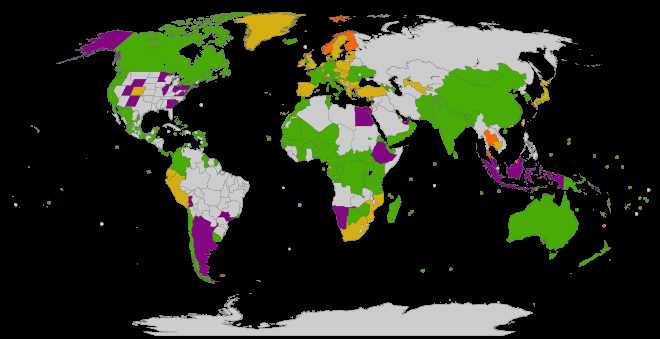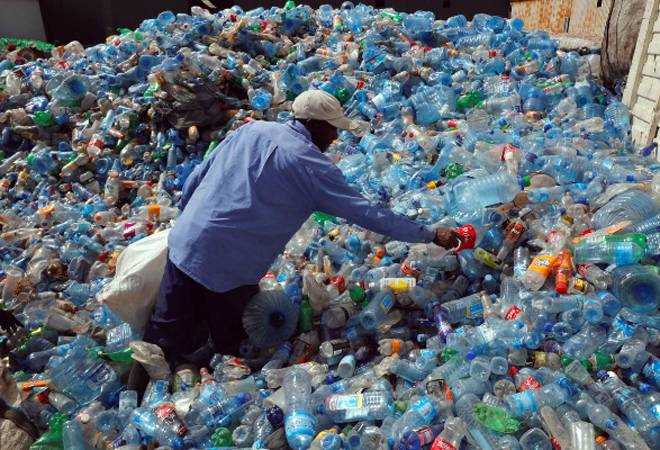Plastic, once hailed as a revolutionary material, has become an environmental nightmare. It is estimated that over 8 billion metric tons of plastic have been produced since the 1950s, and much of it ends up in our oceans, landfills, and even our food chain.
But when did the movement to ban plastic first begin? Let’s take a journey through the history of plastic bans, starting with a small island nation in the Pacific.
In 2002, the Republic of Palau became the first country in the world to ban plastic bags. Located in the western Pacific Ocean, this archipelago was facing a growing problem of plastic pollution. Palau’s move to ban plastic bags was motivated by a desire to protect its unique marine environment and promote sustainable tourism.
Since then, a wave of plastic bans has swept across the globe. In 2008, China implemented a ban on thin plastic bags, and the European Union followed suit in 2019. Countries like Kenya, Rwanda, and Bangladesh have also taken steps to ban certain single-use plastics to combat pollution and protect their natural resources.
The momentum for plastic bans has not only been driven by governments. People around the world have become more aware of the harmful effects of plastic pollution and have been demanding change. Environmental organizations and individuals have been advocating for plastic bans, leading to increased public awareness and action.
As the movement to ban plastic continues to gain momentum, many cities, states, and countries are implementing their own regulations to reduce plastic waste. From plastic bag bans to restrictions on single-use straws and cutlery, the fight against plastic pollution is far from over. The question now is not who first banned plastic, but rather how can we all work together to create a sustainable future?
- The Early Days of Plastic Bans
- Exploring the Origins of the Plastic Ban Movement
- The First Major Plastic Ban: A Look Back
- The Impact of Plastic Bans
- Q&A:
- What is the history of plastic bans?
- When did plastic bans gain momentum?
- Who was the first country to ban plastic bags?
- What are some other countries that have banned plastic?
- What are the benefits of plastic bans?
- When was plastic first banned?
- What are some countries that have banned plastic?
The Early Days of Plastic Bans

In the early days of plastic bans, the negative impact of plastic on the environment was not yet widely recognized. As plastic started gaining popularity in the mid-20th century, it was seen as a convenient and cheap material that revolutionized various industries.
However, as time went on and the environmental consequences of plastic became apparent, concerns began to arise. The growing amount of plastic waste polluting landfills, oceans, and other natural habitats was becoming a cause for alarm.
One of the first countries to take action against plastic was Bangladesh. In 2002, the country implemented a nationwide ban on plastic bags due to their role in clogging drains and contributing to flooding during monsoon seasons. This ban was a significant step towards raising awareness about the harmful effects of plastic and the need to find alternatives.
In 2008, China also took a major step by banning the production, sale, and use of ultra-thin plastic bags. This move was prompted by the immense plastic waste produced by the country, which was causing severe pollution and environmental degradation.
Other countries and cities around the world soon followed suit, implementing their own plastic bans in various forms. Some banned single-use plastic bags, while others targeted specific plastic items like straws or food containers.
Although the early plastic bans were met with some resistance from industries and consumers, they paved the way for a global movement towards reducing plastic waste and finding more sustainable alternatives. Today, plastic bans are becoming more widespread, with many countries recognizing the need to take action to protect the environment and future generations.
It is important to note that plastic bans alone are not a comprehensive solution to plastic pollution. Education, recycling programs, and the development of biodegradable alternatives are also crucial in tackling this issue. Governments, businesses, and individuals all have a role to play in creating a sustainable future free from the harmful effects of plastic.
Exploring the Origins of the Plastic Ban Movement

The plastic ban movement can be traced back to the late 20th century when concerns about the environmental impact of plastic waste began to gain traction. As more and more plastic products were being produced and disposed of, it became evident that the material was causing significant harm to ecosystems and wildlife.
One of the first major actions against plastic waste was taken by the Canadian province of Manitoba in 2007. They introduced a ban on plastic shopping bags, becoming the first jurisdiction in North America to do so. This move sparked interest and inspired other communities and countries to follow suit.
Another key moment in the history of the plastic ban movement was the adoption of the European Union’s Single-Use Plastics Directive in 2019. This directive aims to reduce the impact of certain single-use plastic products, such as straws, cutlery, and cotton bud sticks, on the environment. It also sets a target for all plastic packaging in the EU to be recyclable by 2030.
Since then, plastic bans have been implemented in various forms and scales around the world. Many cities and countries have introduced restrictions or outright bans on plastic bags, single-use plastic straws, and other disposable plastic items. These bans are often accompanied by efforts to promote sustainable alternatives, such as reusable bags and biodegradable materials.
The plastic ban movement continues to evolve and expand as more individuals, communities, and organizations recognize the urgent need to address plastic pollution. Advocacy campaigns, educational initiatives, and policy changes are all contributing to the growing momentum behind the movement. While progress has been made, there is still much work to be done to eliminate plastic waste and create a more sustainable future.
The First Major Plastic Ban: A Look Back

Plastic has become such a pervasive part of our daily lives that it’s hard to imagine a time when it wasn’t widely used. However, there was a time when plastic wasn’t as prevalent, and in fact, it was seen as a new and exciting material.
But as time went on, it became clear that the widespread use of plastic was having a detrimental impact on the environment. Plastic waste was piling up in landfills, oceans, and rivers, causing harm to wildlife and ecosystems.
In response to these escalating concerns, the first major plastic ban was implemented. It was a historic moment that marked a turning point in the fight against plastic pollution.
The first major plastic ban took place in 1976, in the city of San Francisco, California. The ban targeted single-use plastic bags, which were a major contributor to litter and environmental damage.
The ban prohibited the distribution of plastic bags by grocery stores, department stores, and other retailers. Instead, customers were encouraged to bring their own reusable bags or purchase paper bags.
This ban was met with mixed reactions from the public. Some embraced the change and supported the ban as a necessary step to protect the environment. Others criticized the ban, arguing that it would inconvenience shoppers and hurt businesses.
Despite the controversy, the ban in San Francisco proved to be successful. It significantly reduced the consumption of plastic bags and led to increased awareness about the need for more sustainable alternatives.
Following the success of the ban in San Francisco, other cities and regions around the world started implementing their own plastic bans. These bans focused not only on plastic bags, but also on other single-use plastic items such as straws, cutlery, and food containers.
Today, plastic bans have become increasingly common as more and more people recognize the importance of reducing plastic waste and protecting the environment. The first major plastic ban in San Francisco played a crucial role in setting the stage for these future bans.
Looking back, it’s clear that the first major plastic ban was a significant milestone in the fight against plastic pollution. It demonstrated that change is possible, and that with collective effort, we can make a difference in preserving our planet for future generations.
The Impact of Plastic Bans

Plastic bans have had a significant impact on reducing plastic waste and pollution, leading to positive environmental outcomes. Here are some key points about the impact of plastic bans:
- Reduction in plastic waste: By banning single-use plastics like plastic bags, straws, and water bottles, plastic bans have successfully reduced the amount of plastic waste being generated. This has helped reduce the burden on landfills and prevented plastic from ending up in oceans and other natural habitats.
- Protecting marine life: Plastic pollution poses a grave threat to marine life, as animals often mistake plastic for food or become entangled in plastic debris. Plastic bans have played a crucial role in protecting marine ecosystems by reducing the amount of plastic waste entering the ocean.
- Promoting alternative materials: Plastic bans have encouraged the development and use of alternative, more sustainable materials. This has led to innovations in packaging and consumer goods, such as biodegradable or compostable options. By promoting the use of eco-friendly materials, plastic bans have spurred the transition to a more sustainable economy.
- Changing consumer behavior: Plastic bans have raised awareness about the harmful effects of plastic on the environment and have prompted individuals to rethink their consumption habits. People are now more conscious of the plastic they use and are actively seeking out alternatives. This shift in consumer behavior is contributing to the long-term reduction of plastic waste.
- Positive economic effects: While there may be initial costs associated with transitioning away from plastic, plastic bans have also created new economic opportunities. The demand for eco-friendly products and packaging has stimulated innovation and the growth of industries focused on sustainable solutions. This has created jobs and boosted local economies.
- Global impact: Plastic bans have gained momentum worldwide, with numerous countries, cities, and businesses implementing their own restrictions on plastic. By collectively taking action, these efforts are making a significant impact on reducing plastic pollution globally, raising awareness about the issue, and inspiring others to follow suit.
Overall, plastic bans have proven to be an effective strategy in addressing the environmental challenges posed by plastic pollution. They have resulted in a reduction in plastic waste, protected marine life, promoted sustainable alternatives, changed consumer behavior, and had positive economic and global impacts. Continued efforts to implement and enforce plastic bans will be vital in creating a more sustainable future.
Q&A:
What is the history of plastic bans?
Plastic bans have a long history, dating back to the 1960s when municipalities in the United States first started implementing restrictions on plastic bags. Since then, many countries and cities around the world have followed suit, implementing bans on single-use plastics and imposing regulations on plastic waste.
When did plastic bans gain momentum?
Plastic bans gained significant momentum in recent years, with a sharp increase in the number of countries and cities implementing restrictions on single-use plastics. This can be attributed to growing awareness about the environmental impact of plastic waste and the need to find more sustainable alternatives.
Who was the first country to ban plastic bags?
The first country to ban plastic bags was Bangladesh in 2002. This ban was initiated due to the severe environmental issues caused by plastic bags, such as clogging drainage systems and contributing to flooding during the monsoon season.
What are some other countries that have banned plastic?
Several countries have implemented bans on single-use plastics. Examples include Kenya, which banned plastic bags in 2017, and Canada, which announced plans to ban certain single-use plastics by 2021. Other countries such as France, India, and Costa Rica have also taken significant steps to reduce plastic waste.
What are the benefits of plastic bans?
Plastic bans have several benefits. They help reduce plastic waste and its negative impact on the environment, including marine pollution and harm to wildlife. Bans also encourage the use of more sustainable alternatives and promote a shift towards a circular economy. In addition, they raise awareness about the need for individuals and businesses to adopt more environmentally friendly practices.
When was plastic first banned?
The first known ban on plastic was implemented in 1990 in Nantucket, Massachusetts. It was a ban on single-use plastic bags.
What are some countries that have banned plastic?
Several countries have implemented bans on plastic, including Kenya, Rwanda, and Bangladesh. These bans typically target single-use plastic bags.